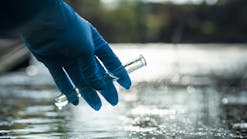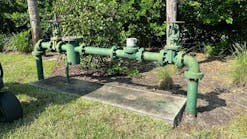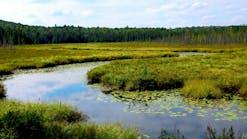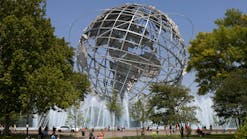Guy Carpenter wears many hats, all in the service of water. He’s Vice President and Water Resources and Reuse Practice Group leader for Carollo Engineers, a California-based water engineering firm. He serves on the board of directors for the WateReuse Association, whose members work to improve local water supplies, and for the Central Arizona Project (CAP). CAP is designed to bring about 1.5 million acre-feet of Colorado River water annually to Pima, Pinal, and Maricopa counties from Lake Havasu near Parker, to the southern boundary of the San Xavier District of the Tohono O’odham Indian Reservation southwest of Tucson.
The 336-mile system of aqueducts, tunnels, pumping plants, and pipelines is Arizona’s largest single source of renewable water supplies. CAP’s roots date to the early 1900s when the seven states of the Colorado River Basin–Arizona, California, Nevada, New Mexico, Wyoming, Colorado, and Utah–negotiated for Colorado River water shares. In 1922, the states created the Colorado River Compact with the US government, dividing the states into lower and upper basins and apportioning each basin 7.5 million acre-feet of water.
What He Does Day to Day
At Carollo Engineers, one-third of Carpenter’s job entails project management: people, budgets, and deliverables. Another third of his time is spent helping other client service managers. “As a practice group leader, my job is to make sure the client service managers throughout our other offices are getting what they need in terms of resources and marketing support for water reuse and water resources,” says Carpenter. The remainder of his time is spent on strategic planning and business operations associated with the company’s Phoenix office.
What Led Him Into This Line of Work
Carpenter was born and raised in Arizona. His parents were both educators. The family would spend summers in Arizona’s White Mountains. “There were beautiful pine trees and mountain streams. I spent a lot of time next to water in Arizona. I realized how incredibly precious that water supply was to the environment and how it became part of the water supply downstream in the Phoenix metro area, so I have been fascinated by that and respectful of it ever since I was a little kid,” he says. He wanted to maintain that quality of life, the environment, and the contribution water made to the state’s quality of life. He earned a Bachelor’s degree in chemistry from Northern Arizona University. In 2006, he obtained a Professional Engineer’s license and became a registered civil engineer.
What He Likes About His Work
“The water in the desert in Arizona is fundamental to the quality of life and the economy,” says Carpenter. “I feel like everything I’m doing is all about securing a good future for Arizona. That makes me feel like I’m doing good things every day. That’s what gets me up in the morning and keeps me going all day.”
His Biggest Challenge
The CAP work presents the biggest challenge. “Our coal-fired plant that we use energy from is the Navajo Generating Station. We use that power to move the water from the Colorado River 336 miles across the state, pumping it up 3,000 feet. The plant is under attack from the US Environmental Protection Agency, in terms of quality standards for visibility, so the Central Arizona Project–being the largest customer of that facility–is going to bear the biggest brunt of the costs associated with making improvements to that plant,” he points out. “That’s going to translate into higher water prices to farmers, cities, and all of our customers, including the Native American tribes.”







